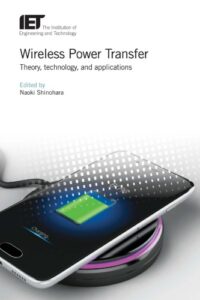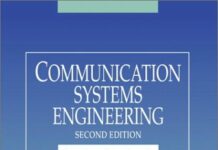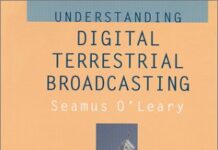| Book Name: | Wireless Power Transfer Theory Technology and Applications |
| Category: | Telecommunication Books |
| Language: | English |
| Format: | |
| Free Download: | Available |
Wireless Power Transfer Theory, Technology, and Applications Edited by Naoki Shinohara | PDF Free Download.
| Book Details : | |
|---|---|
| Language | English |
| Pages | 294 |
| Format | |
| Size | 23.8 MB |
Wireless Power Transfer Theory Technology and Applications

Editor of Wireless Power Transfer Theory Technology and Applications
Naoki Shinohara is Professor at Kyoto University, Japan. His research focuses on solar power satellite and technology and applications of microwave power transfer.
He has been working on wireless power transfer technologies for 25 years. Memberships and positions include the IEEE MTT-S Technical Committee 26 (Wireless Power Transfer and Conversion) chair, IEEE Wireless Power Transfer Conference founder and advisory committee member, international journal of Wireless Power Transfer executive editor,
First committee chair of IEICE Wireless Power Transfer, Space Solar Power Systems Society board member, Wireless Power Transfer Consortium for Practical Applications (WiPoT) chair, and Wireless Power Management Consortium (WPMc) chair.
Wireless Power Transfer Contents
- Introduction
- The basic theory of inductive coupling
- The basic theory of resonance coupling WPT
- Multi-hop wireless power transmission
- Circuit theory on wireless couplers
- Inverter/rectifier technologies on WPT systems
- The basic theory of wireless power transfer via radio waves
- Technologies of the antenna and phased array for wireless power transfer via radio waves
- Transmitter/rectifier technologies in WPT via radio waves
- Applications of coupling WPT for electric vehicle
- Applications of long-distance wireless power transfer
- Biological issue of electromagnetic fields and waves
- Impact of electromagnetic interference arising from wireless power transfer upon implantable medical device
Introduction to Wireless Power Transfer Theory Technology and Applications
Nikola Tesla dreamed of a ‘‘wirelessly powered world’’ at the end of the nineteenth century (Figure 1.1). He sometimes tried to transmit power wirelessly, believing that he could send it anywhere on Earth using resonance phenomena [1].
Unfortunately, his dream has failed to materialize. Nevertheless, he is considered a pioneer of wireless power transfer (WPT).
At around the same time, in 1894, M. Hutin and M. LeBlanc proposed an apparatus and a method for powering an electrical vehicle (EV) inductively using an alternating current (AC) generator of approximately 3-kHz frequency (Figure 1.2) [2].
EVs were developed shortly after the steam engine, approximately 100 years ago. However, with the development of the internal combustion engine, the EV fell out of favor. As a result, after
Hutin and LeBlanc, the EV inductive-coupling WPT charger was forgotten the same way Tesla’s dream of WPT was forgotten after him.
There were unremitting efforts to carry the electricity wirelessly after Tesla’s dream. In Japan in 1926, an interesting WPT experiment was carried out by H. Yagi and S. Uda, the inventors of the Yagi–Uda antenna.
They placed non-feed parasitic elements between a transmitting antenna and a receiving antenna with a frequency of 68 MHz to transmit wireless power (Figure 1.3) [3]. This device was named ‘‘wave canal,’’ and it was similar to the Yagi–Uda antenna.
It was a WPT experiment via radio waves. But it can be considered as a coupling WPT because the wireless power was transmitted through coupling antennas/directors as resonators.
They successfully received approximately 200 mW by transmitting 2–3 W of electric power. In the same period in the United States, H. V. Noble demonstrated the WPT via a 100-MHz radio wave at the Chicago World Fair III in 1933 (Figure 1.4).
The distance between a transmitting antenna and a receiving antenna was 5–12 m and the transmitted wireless power was approximately 15 kW. The dream of the wireless power was taken over after the Second World War by, for example, W. C. Brown in the United States with microwaves in the 1960s [4],
D. Otto in New Zealand with inductive very low frequency (VLF) in the 1970s [5], and a lot of researchers. Figure 1.5 indicates the first WPT-aided flying drone experiment via microwave by W. C. Brown in the 1960s.
But except some commercial inductive wireless charger for a wireless telephone, an electric toothbrush, and a shaver, the WPT technology became a lost technology.
In an integrated circuit (IC) card, the inductive WPT at 13.58 MHz is adopted. But it is considered a near-field communication system, not a WPT.
We had to wait for the twenty-first century when a dream of the WPT arose again. A century after Tesla, Hutin, and LeBlanc, we now have the same dream of WPT. Over the last hundred years, many studies, developments, and commercial products have been based on WPT technology as described before.
Its operational principles can be divided into ‘‘electromagnetic coupling WPT’’ and ‘‘uncoupled WPT’’ or ‘‘radiative WPT.’’ The electromagnetic coupling WPT is called near-field WPT and uses high-frequency magnetic or electric fields.
It is also called an inductive-coupling WPT when the high-frequency magnetic field is used. Inductive-coupling WPT is explained by Ampere’s law and Faraday’s law. Radiative WPT is called as far-field WPT, and it is a WPT that happens via radio waves.
The WPT via radio waves is explained by Maxwell’s equations. Recently, resonance-coupling WPT has been developed as a revised inductive coupling WPT. A Massachusetts Institute of Technology research group proposed a resonance-coupling WPT system in 2007 [6].
The resonance coupling WPT is based on the inductive-coupling WPT. With the help of resonance phenomena, the distance between the transmitter and receiver can be increased more than in conventional inductive-coupling WPT.
Figure 1.6 indicates the relationship between Ampere’s law, Faraday’s law, Maxwell’s equations, the inductive-coupling WPT, the resonance-coupling WPT, and WPT via radio waves.
This book introduces the theory, techniques, and applications of WPT. After the introduction, the theory of coupling WPT is described.
Then, we discuss circuit technologies for the coupling WPT. Next, the theory and techniques of WPT via radio waves are explained, and numerous practical WPT applications are introduced.
Finally, important issues in WPT, including safety problems, are discussed. After reading this book, you will also share the dream of WPT.
Wireless Power Transfer: Theory, technology, and Applications
Author(s): Naoki Shinohara
Series: IET Energy Engineering 112
Publisher: Institution of Engineering and Technology, Year: 2018
ISBN: 9781785613463
Download Wireless Power Transfer Theory Technology and Applications in PDF Format For Free.









![[PDF] Draw Buildings and Cities in 15 Minutes Draw Buildings and Cities in 15 Minutes pdf](https://www.freepdfbook.com/wp-content/uploads/2021/06/Draw-Buildings-and-Cities-in-15-Minutes-218x150.jpg)








![[PDF] Digital Image Processing An Algorithmic Introduction Using Java Digital Image Processing An Algorithmic Introduction Using Java](https://www.freepdfbook.com/wp-content/uploads/2022/06/Digital-Image-Processing-An-Algorithmic-Introduction-Using-Java.jpg)




![[PDF] 43 Years JEE ADVANCED + JEE MAIN Chapterwise & Topicwise Solved Papers 43 Years JEE ADVANCED (1978-2020) + JEE MAIN Chapterwise & Topicwise Solved Papers Physics PDF](https://www.freepdfbook.com/wp-content/uploads/2022/03/43-Years-JEE-ADVANCED-1978-2020.jpg)

![[PDF] Problems in Physical Chemistry for JEE (Main & Advanced) Problems in Physical Chemistry for JEE (Main & Advanced) Free PDF Book Download](https://www.freepdfbook.com/wp-content/uploads/2022/03/Problems-in-Physical-Chemistry-for-JEE-Main-Advanced.jpg)
![[PDF] Engineering Physics (McGraw Hill)](https://www.freepdfbook.com/wp-content/uploads/2021/05/bafc8c2685bb6823a9c56134f7fba5df.jpeg)

![[PDF] Engineering Chemistry By Shashi Chawla](https://www.freepdfbook.com/wp-content/uploads/2022/05/Theory-And-Practicals-of-Engineering-Chemistry-By-Shashi-Chawla-free-pdf-book.jpeg)
![[PDF] Chemistry: An Introduction to Organic, Inorganic & Physical Chemistry Chemistry: An Introduction to Organic, Inorganic & Physical Chemistry](https://www.freepdfbook.com/wp-content/uploads/2022/04/Chemistry-An-Introduction-to-Organic-Inorganic-Physical-Chemistry.jpg)
![[PDF] Essentials of Physical Chemistry Essentials of Physical Chemistry Free PDF Book by Bahl](https://www.freepdfbook.com/wp-content/uploads/2022/04/Essentials-of-Physical-Chemistry-bahl.jpg)
![[PDF] Biological control of plant-parasitic nematodes: soil ecosystem management in sustainable agriculture Biological control of plant-parasitic nematodes: soil ecosystem management in sustainable agriculture](https://www.freepdfbook.com/wp-content/uploads/2022/05/Biological-control-of-plant-parasitic-nematodes-soil-ecosystem-management-in-sustainable-agriculture.jpg)
![[PDF] Human Anatomy: Color Atlas and Textbook Human Anatomy: Color Atlas and Textbook Free PDF Book](https://www.freepdfbook.com/wp-content/uploads/2022/05/Human-Anatomy-Color-Atlas-and-Textbook.jpg)
![[PDF] Concepts of Biology Book [Free Download]](https://www.freepdfbook.com/wp-content/uploads/2022/05/Concepts-of-Biology.jpg)
![[PDF] Essentials of Biology [Free Download] Essentials of Biology Free PDF BOok Download](https://www.freepdfbook.com/wp-content/uploads/2022/05/Essentials-of-Biology-Free-PDF-Book-Downlaod.jpg)
![[PDF] Human Biology Book [Free Download]](https://www.freepdfbook.com/wp-content/uploads/2022/05/PDF-Human-Biology-Book-Free-Download.jpg)


